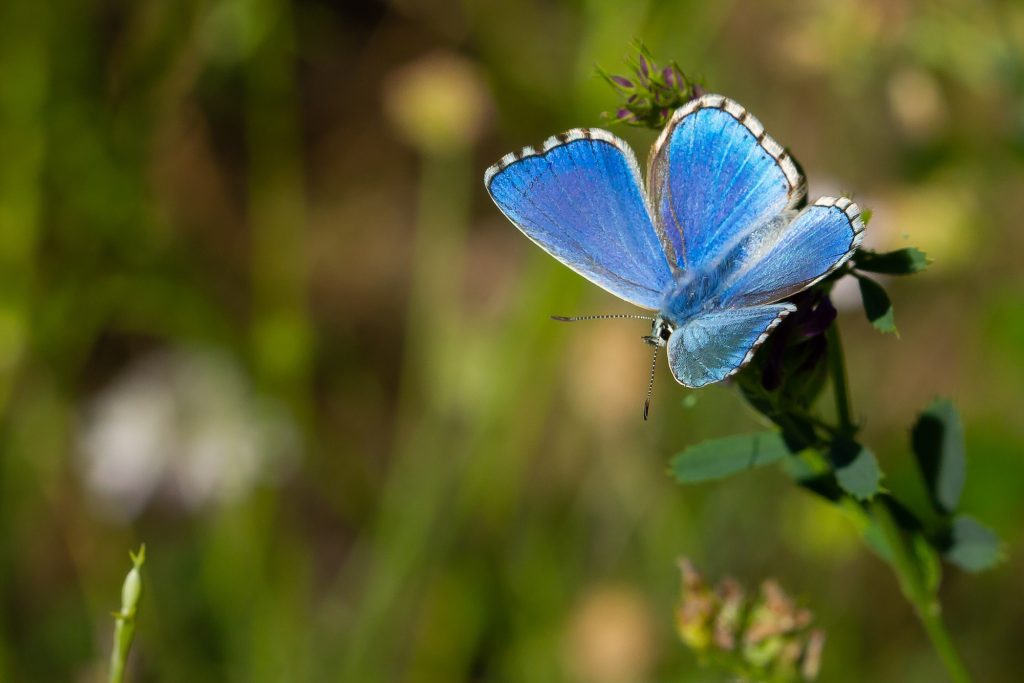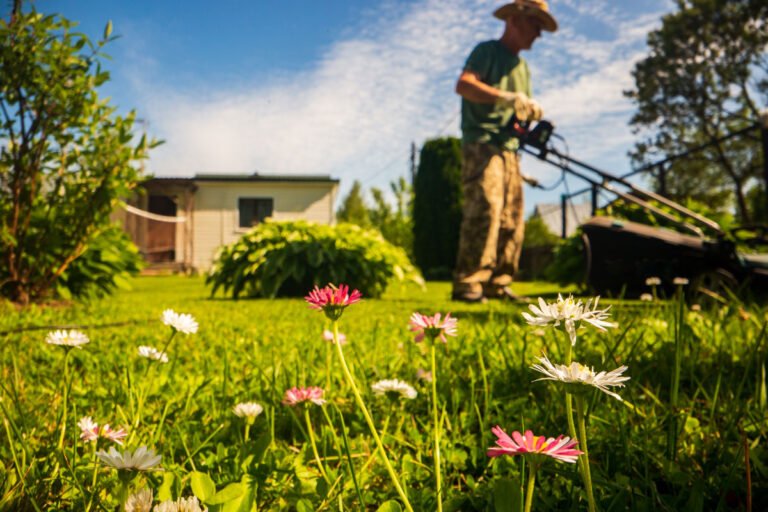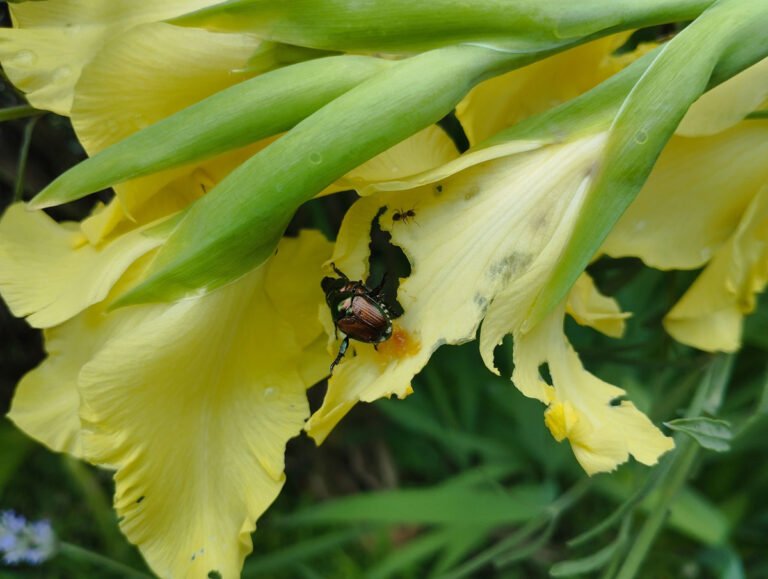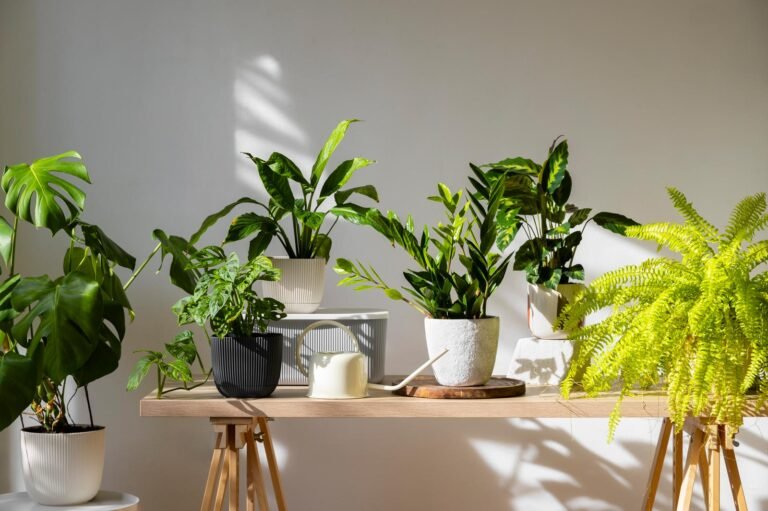Innovative and with correct cultivation techniques that can be applied by both experienced gardeners and beginners, Meadowscaping has its roots in the agricultural and social history of England in the 19th century, culminating in today’s landscape design for public and private green spaces. It is a technique that consists of creating or replacing the entire lawn and garden or a part of their total surface area with a heterogeneous mixture of mainly native herbaceous species, i.e. native to a specific region or geographical area, and wildflowers based on a landscaping style that enhances naturalness and spontaneity while creating a favourable habitat for pollinator insects such as bees and butterflies.
Main features
Significant value is attributed to the minimal maintenance required and the low water consumption, provided that the right plant species are chosen and waited for until they have settled properly. Meadowscaping represents a process of imagining and promoting a style of landscape design based on a variety of species that require less water and energy to grow and flourish, while also favouring and supporting biodiversity by creating habitats suitable for beneficial insects on which ecosystems depend. Principles such as reduced environmental impact, less pollution from pesticides and herbicides, improved soil and groundwater quality, and prevention of rainwater run-off are at the heart of this practice that has been growing rapidly in recent years to promote natural cycles that strengthen the resilience of your green areas whether it is a lawn or a garden. Let us therefore better understand together the advantages and peculiarities of this technique while also analysing some specific cultivation aspects.

Biodiversity
The choice of native herbaceous species rich in nectar and pollen as well as the elimination of operations such as fertilising, weeding or repeated mowing of the turf enables the creation of a suitable and undisturbed ecosystem for pollinating insects such as bees as well as a wide variety of birds and wild animals, thus contributing to strengthening or restoring the ecological balance both in your green space and beyond its borders.
Meadowscaping is not just an alternative trend but a way of proceeding by specific design and operational steps, transforming ordinary spaces into an enhancement of biodiversity, a natural habitat or habitat garden, in a fusion of harmony and local ecosystem balance. A ‘pollinator garden’ with native plants can provide a source of natural habitats for insects such as butterflies or moths that need host plants to survive as sources of food and shelter for egg-laying and as a wintering site.
Plants
The choice of botanical species requires careful planning based also on their hardiness and drought resistance in the light of today’s climate scenarios. We can opt for the purchase of a specific mix of wildflowers appropriately blended to ensure a continuity of flowering year after year from spring to autumn, even better if the mix includes annual and perennial herbaceous species of different heights, ensuring that the lower plants flower first and then the taller ones to obtain an orderly result with high ornamental value.let us choose, with the advice of an agronomist or an expert in the sector at your local garden, a heterogeneous mix of Insect friendly species, suitable for the climate and soil in your area, remembering that not all plants are the same!
There are seed mixes of annuals, perennials and biennials, each with different growth and flowering times to stabilise our green area, where annuals will give us colour and vibrancy during the first year by filling in the lawn or border during the first season and also limiting weed development while perennials will first consolidate their root system by developing only foliage while they will begin to flower from the second year when the annuals will probably have disappeared, although we may be lucky enough to see them again following their self-dissemination. If the perennials are not at the top of their flowering potential during the second year, let us not worry as the biennial species, i.e. those plants with a two-year life cycle, will give elegant textures and changing colours, creating a result similar to the colourful palette of an impressionist painting, bright and natural.
In subsequent years we can also re-sow annual species to fill in any empty spaces or simply to reinforce the visual impact of our established lawn or natural garden with new colours, while perennials once established will largely disseminate themselves.

Lawn
The creation of a lawn according to the principles of Meadowscaping requires suitable preparation, starting with the exposure, which varies according to the species chosen but in general it is better if it is sunny, and with well-draining soil, followed by the removal of weeds and the existing turf, the latter often easier to carry out during the winter months; it is also important to select mainly native species that are drought-resistant and well liked by beneficial insects.
We must also remember that the lawn will require a maintenance plan, especially during the first few years, and in particular until it is stabilised it is necessary to ensure careful control of weeds, which can compete for fundamental elements such as water, light and nutrients.we can opt for a series of mowing in the case of a lawn sown in autumn or early-mid spring, and for manual weeding if we choose to plant young plants in spring following the last frost.
We also water regularly during the stabilisation phase and during summer periods of intense drought. Afterwards, the lawn will not require as much maintenance as a ‘conventional’ turf, even the number of mowings can be reduced without removing the waste material in order to promote precisely the seeds dispersal.

Water requirements and maintenance
Native species, if chosen according to correct criteria such as drought resistance, also based on the xeriscaping technique (a method of landscaping based on the reduction of water consumption), have a lower water requirement, thus reducing irrigation interventions and ensuring a better use of such an important natural resource as water.
Meadowscaping is also characterised by low or minimal maintenance, requiring zero management effort in terms of cultivation operations such as weeding and fertilising or, in the case of lawns, reduced mowing.
Some suggestions…
We group the species to be planted in balanced groups for a visually attractive result and to facilitate pollinators, planting the plants also in relation to the final height reached by each of them, as meadowscaping style green spaces must appear natural and spontaneous but still require targeted planning. We can proceed gradually on a small scale by first creating small spaces such as borders along fences and paths, or portions of lawn to observe and better understand the adaptation of the chosen species and their evolution over time.
We use natural mulch or straw to suppress weeds and ensure a suitable soil moisture level. In spring, we wait for temperatures to rise before cleaning the garden of fallen leaves on the ground in order to favour a correct and complete overwintering of beneficial insects in their larval stage; we can also provide them with shelter by means of portions of trunk and small branches. We also sow or plant herbaceous perennials rich in nectar and pollen in pots, planters or trays to create a favourable habitat for pollinating insects, so important for biodiversity, and remember to leave a source of water available for bees and birds in shallow trays.
By following these cultivation guidelines we will realise that Meadowscaping is more than just a trend but rather a practice based on precise planning and careful observation of nature in order to reconnect with it, reducing its environmental impact and creating a habitat rich in biodiversity with high ornamental value and plausible health and environmental results.











